- Home
- John Norman
Beasts of Gor coc-12 Page 7
Beasts of Gor coc-12 Read online
Page 7
“Do you think you could make me kneel to you?” asked a girl sitting on a platform, with chained neck and ankles, her knees drawn up, chewing on a larma fruit. She smiled at me, over the fruit, Then she turned white. “Forgive me, Master!” she cried. She had seen my eyes. She knelt before me on the boards, trembling, her head down. Would she be permitted to live? The fruit lay discarded beside her. I took the fruit and bit into it. I watched her for a time, and then I said, “Lift your head.” She did so. I threw the fruit back to her, and she, fearfully, caught it. She held it In her bands, looking at me. “Finish it,” I said, “and then, for an Ahn, lie on your belly.” “Yes, Master,” she said.
I looked up, beyond the crowds and platforms. From where I stood I could see the great palisade, and the black, snow-capped mountains of the Sardar.
I moved on, pushing past a man who was examining the legs of a slave girl, feeling them. He was considering her purchase.
“Where are the new slaves?” asked one man of another.
“They are on the western platforms,” said the respondent. Those platforms are commonly used for processing and organization. Girls are not often sold from them. They wait there, usually, when they are brought in, before they are conducted to their proper platforms, those on which they will be displayed, those having been rented in advance by their masters.
Since I had time to spare I took my way to the western platforms. If something good might be found there perhaps I could find on which platform she was to be vended, and might then arrange to be at that platform when she arrived. As soon as the locks snap shut on a girl’s chain at the platform she is available to be bid upon. Perhaps I would find something good.
I was soon at the western platforms.
It is easy to tell among girls which are familiar with their condition and which are not. Once a girl truly understands that she is a slave, and that there is no escape for her, once she understands it truly, emotionally, categorically, intellectually, physiologically, totally, deeply, profoundly, in every cell in her beautiful body, a fantastic transformation occurs in her. She then knows she is truly a slave. She then becomes wild, and free, and sexual, and cares not that he might be scorned by the free either for her miserable condition or helpless appetites; she knows she will be what she must; she has no choice; she is slave. Women, in their heart, long to submit; this is necessary for the slave girl; she must submit or die; submitted, she is thrilled to the core; she lives then for love and service, bound to the will of her master. The joy of the slave girl may seem incomprehensible to the free but it is a reality.
I heard the lamentations of girls in chains.
It must be clearly understood that the life of the slave girl, of course, can often be far from joyful.
After all, she is slave. Her wills mean nothing.
She can be bought and sold.
She is subject to the whip, and torture and even death should the master please.
She does not know who will buy her.
Her condition is objectively degrading.
Often she must labor with perfection to please a harsh master to whom she is nothing.
The glory of the slave girl is that she is a slave; and the misery of the slave girl is that she is a slave.
But all in all chains are right for a woman. They belong in them.
I looked at some of the new platforms. I could easily detect girls who were fresh to the collar. They were clumsy and tight, not yet liberated and free, not yet women.
Even as I walked about the new platforms wagons, drawn by draft tharlarion, waited to unload their lovely wares. The markets of the Sardar fairs are large and important ones in the Gorean economy. Most of the wagons were common slave wagons, with a parallel bar running down the center of the wagon box, about which the ankles of the girls were chained; others, however, were flat wagons fixed with an iron framework; two lines of girls kneel back to hack on such a wagon, their ankles and necks locked into the framework; on the flat wagons I saw the wrists of the beauties were braceleted behind them.
I inspected more of the new platforms.
It is painful for a girl to be locked in the framework of a flat wagon but, of course, she is well displayed enroute.
On some of the new platforms the women were still clothed or partly clothed.
I was about to leave the area of the western platforms when I saw something which interested me, a set of four girl.
I walked casually over to the vicinity of the platform, standing back somewhat.
Three were dark-haired and one was blond. The wrists of each were chained; the ankles, too, of each were chained. Their wrists were separated by some six inches of chain, their ankles by about a foot of chain.
They were kneeling.
They wore collars, fastened together by a chain.
What I found interesting about these girls was that they wore Earth raiment.
The girl on the end, blond, wore very brief denim shorts, faded and blue. They were low on her belly, revealing her navel and tattered about the hems. They had round metal snaps. She wore a blue, workman’s shirt, the tails of which were tied under her breasts, to display her midriff. She was tanned, and blue eyed. Her blond hair was loose and there were tiny rings in her ears. The next girl, dark-haired, lovely, wore black, feminine slacks; these were apparently of some synthetic Earth material; the left leg of the slacks was torn from the knee downward; she also wore what had probably been a soft, red, turtle-necked pull-over; it, too, was rather feminine; perhaps that is why it had been half torn from her; her right breast was exposed; when I looked at her she looked down, frightened, and with one chained hand drew a shred of the pull-over before her, to conceal herself; I smiled; how meaningless was the gesture; did she not know where she was; she was on Gor; she was on the platform; she, too, wore ornaments in her ear lobes, tiny jewellike disks, very small; the next two girls, too, were both dark-haired, and dark-eyed, and were attired, save for the colors of their shirts, identically; both wore blue trousers of denim; both wore flannel shirts, one a plaid flannel and the other a beige flannel; both wore small earrings of gold. I thought, of course, of the girl in the house of Samos and the raiment she had worn, which had been burned in her presence. She and the last two girls would have been extremely similarly attired; they all wore, or had worn, the male-imitation uniform which I gathered must be popular among such girls, girls apparently striving to copy a masculinity which hormonally and anatomically would be forever denied to them; better to be an imitation man they seemed to reason than to dare to be what they were, women; it seemed to me permissible that a woman should he a woman, but I suppose the matter is more complex than this simplicity would suggest; I wondered if such girls feared the promptings of their sex, the stirrings in them of a biology antedating the caves; but perhaps male imitation was only an unconscious step, a scarcely understood phase, ingredient to the possibly inexorable unfolding dynamics of a machine culture, a step or phase leading to what would be the proper fulfillment of the needs of the machine, sexless, tranquil, utilizable units, suitable components, functionality and neuterism triumphant. The machine and the animal must, I suspect, forever be at war, or until one conquers. On Gor slaves know to whom they belong.
I looked at the girls on the platform. How little they would understand a biological world. And yet each wore adornments in her ears, which required the literal piercing of her ears, the softness of her beauty yielding therein to the emblematic spike of penetration. On Gor only slave girls have pierced ears. On Gor these girls, with pierced ears, could be only slaves. Yet how feminine was this, that they had had their ears pierced, they, though girls of Earth. Gorean free women often envied slave girls their pierced ears, though this would seldom be admitted. How barbaric that an ear should be pierced that it may wear an adornment selected by a master. Their ears had been pierced. I admired this small, almost meaningless symbol of their femininity, this small, pathetic gesture protesting to the machine and the lies that they were reall
y women; too, I recalled the undergarments of such girls; they, too, protested the cause of their beauty in the alien country of the machine. From the lineaments of the garments they wore I did not think, however, that their masters had permitted them their customary undergarments. Certainly the dark-haired girl in the torn red pull-over had no longer been permitted her brassiere. It is common to permit a Gorean slave girl only one layer of clothing, if any. That they had been permitted to retain for the time what they now wore rather than, say, brassiere and panties, or nothing, was doubtless due only to the whim of the slaver who owned them.
“I wish to speak to someone,” said the girl on the end, addressing a slaver’s man who was passing them. He stopped, surprised that she had dared to speak.
“Send someone to me who is in authority who speaks English,” she demanded.
He cuffed her. “Be silent,” he said to her, in Gorean. The girl had been struck back in her chains. She seemed utterly startled. Her eyes were wide. She put her fingers to her mouth. There was blood there.
“He hit me,” she said. “He hit me.”
The girls looked about themselves, frightened. The girl in the brief shorts, the blond on the other end, knelt back, making herself small.
“He hit me,” said the girl who had been struck. There was a strange, frightened look in her eye. She looked after the man, and then looked again to the other girls.
“Yes,” whispered the girl in the torn red pull-over, shrinking back in her chains.
The girl who had been struck again looked after the fellow who had cuffed her. There was a look in her eyes which was akin to awe. Then again they looked at one another, frightened. I gathered they had never seen a girl cuffed before. It might be done, they realized, to any one of them.
The girl in denim shorts, whom I would have originally thought would have been the least frightened of her native sexuality, looked at the others. “What if they make us kiss them?” she asked. “What will we do?”
“Kiss them,” said the girl in the torn red pull-over.
“Do you think they will want anything like that?” asked the dark-haired girl in the plaid flannel shirt.
“Who knows what they will want,” said the girl in the pull-over.
“We have rights!” said the blond girl in the shorts.
“Do we?” asked the girl in the red pull-over. She seemed the most feminine of all.
The girls were silent for a time. Then one spoke, the girl in the shorts. “What sort of prisoners are we?” she asked.
“Let us hope,” said the girl in the red pull-over, “that we are just prisoners.”
“I do not understand,” said the girl in the shorts. “What else might we be?”
“Can you not guess?” asked the girl in the red pull-over.
“No,” said the blond girl, in the brief shorts, frightened.
“Perhaps we are slaves,” said the girl in the red pull-over.
“Don’t joke,” said the blond girl, aghast.
The girl in the red pull-over shrugged and looked away.
“Please don’t joke,” whispered the blond girl. The girl in the red pull-over did not respond to her.
I considered the slaves. The fact that the blond had worn shorts and had tied her shirt as she had made it clear to me that she was willing to display her body. From this I would have originally thought that she might have been the least frightened of her sexuality. I now understood that she, in spite of her attire, deeply feared her native drives. Indeed, perhaps she had dressed as she did to try to convince herself, and others, that she did not fear them. Her behavior, however, made manifest the nature of her terror. Doubtless she had sensed in her dreams, and in inadvertent moments, what men might do to her. But that she had displayed her body as she did, even in compensation for her fears, which she would scarcely admit to herself, indicated the strength of the drives against which she fought. She had dressed her body as a challenge to men, though she feared them. Her mode of dress suggested powerful drives, which might, by a master, be well exploited. It was interesting to note that the garb of both the blond and the girl in the red pull-over were variations of the uniform of male imitation; the blond wore the uniform. except that she altered it to brazenly display that it was she, actually a female, and an attractive one, who wore it. The garb of the dark-haired girl, the black slacks of some synthetic material and the soft, red pull-over, was also a variation from the conformist raiment of the two girls on the end. She wore pants, of course, for slacks are a form of pants, and her garments, in general, were body-concealing; these features they had in common with the male-imitation garb of the two girls on the end; on the other hand the slacks were not as body concealing as they might have been for they were cut, actually, subtly, in such a way as to betray her figure; the soft pull-over, too, would leave no doubt as to her femininity, particularly now that her masters had removed her brassiere from her. The slacks, I conjectured, were custom tailored. She had probably been rich. She was now a slave. The blond girl, I would have conjectured, would have been from the middle class. She, too, now, was a slave. Both girls were now identical, only slaves. The fact that the dark-haired girl had worn the garments she did suggested that she had felt, for some time, her femininity, though doubtless it had never been adequately exploited on Earth. She would have lived in unfulfilled frustration. Her garments, in their own way, like those of the blond girl, suggested that she, too, had deep feminine drives. She seemed more honestly to recognize them than the blond girl. I did not know which of them would have the deepest, richest sexuality. Both, I conjectured, would be prizes. I had little doubt the dark-haired girl would come most quickly to lick her chains. The other two girls, I felt, were far behind their chain sisters. They were still, in effect, almost imitation boys. It might take months for them to suddenly, in the throes of the female slave orgasm, become true women.
Another slaver’s man walked past them. They shrank back.
I wondered if these girls had been in the same shipment as the girl I had met in the house of Samos. I supposed at one time each, unconscious, had worn locked on her left ankle the steel identification anklet of the Kur slaver. They wore now, as it was easy to see, only rounded ankle rings. Their feet were all bare, of course. Slavers do not put chains or bonds over stockings; similarly, if wrists are to be chained or bound, gloves would be removed; bonds are not placed over clothing. Gorean slave girls, incidentally, almost always go barefoot; it is a rare girl, and a high girl, who is permitted sandals. I looked again at the four girls. Earth-girl slaves, thanks to the raids of Kur slavers, are not as rare on Gor as they used to be. Earth girls are thought to make superb slaves. Gorean men will pay for them. Earth-girl names, incidentally, are thought of on Gor as slave names. Even many slave girls of Gorean origin wear them. That Earth-girl names are thought of on Gor as slave names is an indication of the regard in which Gorean men hold Earth girls. They are thought to be natural slaves. I believe, incidentally, that this hypothesis is true. She is not herself until she wears a collar and kneels at the feet of a master.
I turned away from the girls, for I had become hungry. I would eat at one of the public restaurants set up in the district of the fair.
I had considered buying the two girls on the end, those on the chain’s left, as I faced it, the blond and the dark-haired girl in the red pull-over, but I decided against it. They were not yet broken in, and I felt my men might kill them. Both girls I felt had an amazing potentiality, even beyond that of most Earth girls, for being superb slaves. It would be unfortunate if this potentiality were to be rudely terminated while they thrashed, bound, in the canals under the teeth of urts.
I glanced back once at the four girls, kneeling closely together, chained, on the platform. The collars they wore seemed somewhat incongruous with their upper garments, the blue workman’s shirt of the blond girl, the soft pull-over of the dark-haired girl, the flannel shirts of the two dark-haired girls on the end, but, still, somehow, they seemed correct, and
even beautiful, on their throats. Their wrists, in the two-inch-high, steel cuffs, were small and lovely. Their feet, in the confining ankle loops, were small and beautiful. I was pleased. Their chains looked well on them. This is a way of telling what girls are true slaves. But do chains not look well on any woman? But is not any woman a true slave? I commended the taste and judgment of the Kur slavers. Such girls, yielded, would nestle well in a man’s arms. I saw two slaver’s men advancing toward them. The first carried a knife, the second, over his arm, carried some brief, white, platform tunics.
I swilled down the last of the Cal-da. I had not had it since Tharna.
In the restaurant where I had eaten there were some two hundred tables, under tenting.
I wiped my mouth on my sleeve and rose to my feet.
There were many at the tables who were singing the songs of Ar.
“I am looking forward to the game,” had said Centius of Cos to Scormus of Ar.
“I shall destroy you,” had said Scormus of Ar.
I wondered what thoughts occupied these giants of Kaissa on the eve of their confrontation. Scormus, it was said, walked the tiers of the amphitheater, alone, restlessly, eagerly, like a pacing, hungry beast. Centius of Cos, in his tent, it was said, seemed unconcerned with the match. He was lost in his thoughts, studying a position which had once occurred a generation ago in a match between the minor masters Ossius of Tabor, exiled from Teletus, and Philemon of Aspericht, not even of the players, but only a cloth worker. The game had not been important. The position, however, for some reason, was thought by Centius of Cos to be intriguing. Few masters shared his enthusiasm. It had occurred on the twenty-fourth move of red, played by Philemon, Physician to Physician Six, generally regarded as a flawed response to Ossius’ Ubar to Ubara’s Scribe Five. Something in the position had suggested to Centius of Cos a possible perfection, but it had never materialized. “Here, I think,” had said Centius of Cos, “the hand of Philemon, unknown to himself, once came close to touching the sleeve of Kaissa.”

 Avengers of Gor
Avengers of Gor Kajira of Gor coc-19
Kajira of Gor coc-19 Mercenaries of Gor coc-21
Mercenaries of Gor coc-21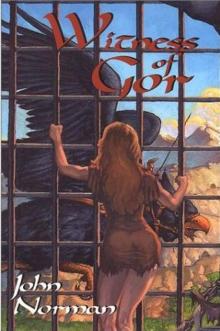 Witness of Gor coc-26
Witness of Gor coc-26 Witness of Gor
Witness of Gor Beasts of Gor coc-12
Beasts of Gor coc-12 Rebels of Gor
Rebels of Gor Mariners of Gor cog[oc-30
Mariners of Gor cog[oc-30 The King th-3
The King th-3 Captive of Gor coc-7
Captive of Gor coc-7 The Captain th-2
The Captain th-2 Vagabonds of Gor coc-24
Vagabonds of Gor coc-24 Explorers of Gor
Explorers of Gor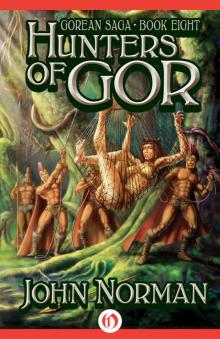 Hunters of Gor
Hunters of Gor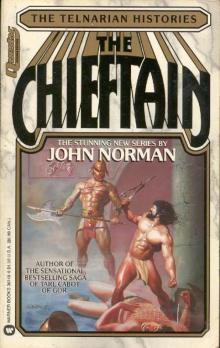 The Chieftan th-1
The Chieftan th-1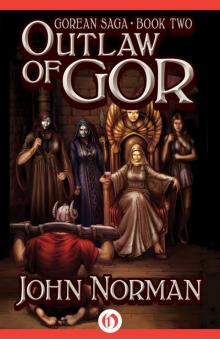 Outlaw of Gor
Outlaw of Gor Priest-Kings of Gor coc-3
Priest-Kings of Gor coc-3 Norman Invasions
Norman Invasions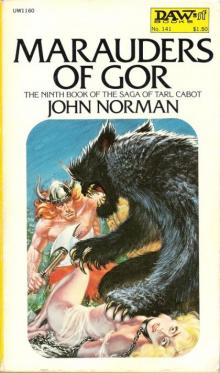 Marauders of Gor coc-9
Marauders of Gor coc-9 Kur of Gor coc-28
Kur of Gor coc-28 Time Slave
Time Slave The Chieftain
The Chieftain Kur of Gor
Kur of Gor Rogue of Gor
Rogue of Gor The Totems of Abydos
The Totems of Abydos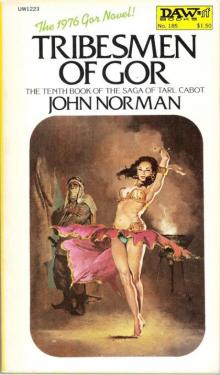 Tribesmen of Gor coc-10
Tribesmen of Gor coc-10 Renegades of Gor coc-23
Renegades of Gor coc-23 The King
The King Tarnsman of Gor
Tarnsman of Gor The Usurper
The Usurper Captive of Gor
Captive of Gor Conspirators of Gor
Conspirators of Gor Smugglers of Gor
Smugglers of Gor Savages of Gor
Savages of Gor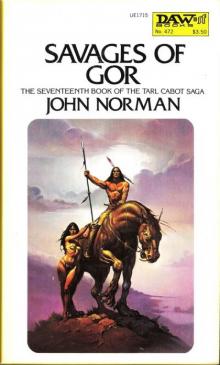 Savages of Gor coc-17
Savages of Gor coc-17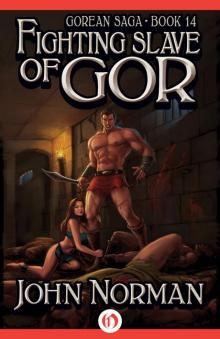 Fighting Slave of Gor
Fighting Slave of Gor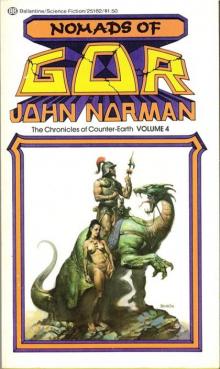 Nomads of Gor coc-4
Nomads of Gor coc-4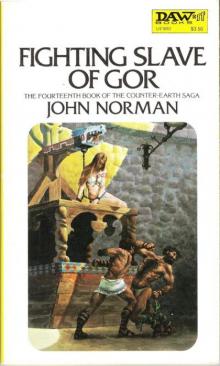 Fighting Slave of Gor coc-14
Fighting Slave of Gor coc-14 Swordsmen of Gor cog[oc-29
Swordsmen of Gor cog[oc-29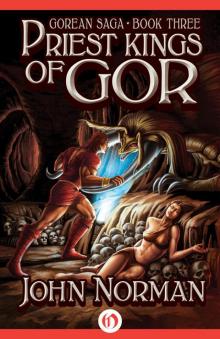 Priest-Kings of Gor
Priest-Kings of Gor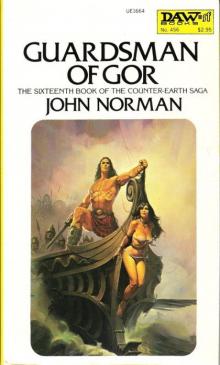 Guardsman of Gor coc-16
Guardsman of Gor coc-16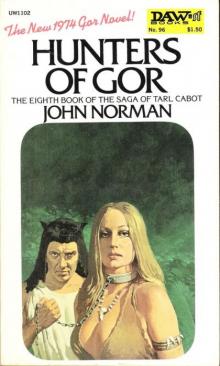 Hunters of Gor coc-8
Hunters of Gor coc-8 Dancer of Gor coc-22
Dancer of Gor coc-22 Prize of Gor coc-27
Prize of Gor coc-27 Conspirators of Gor cog[oc-31
Conspirators of Gor cog[oc-31 Slave Girl of Gor
Slave Girl of Gor Explorers of Gor coc-13
Explorers of Gor coc-13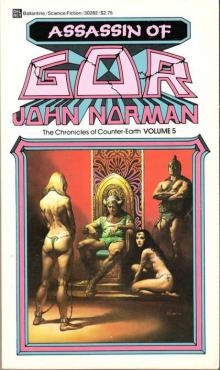 Assassin of Gor coc-5
Assassin of Gor coc-5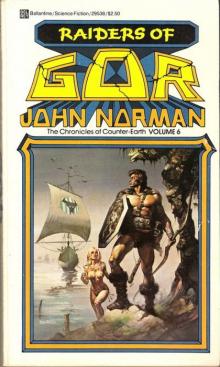 Raiders of Gor coc-6
Raiders of Gor coc-6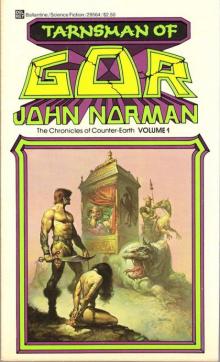 Tarnsman of Gor coc-1
Tarnsman of Gor coc-1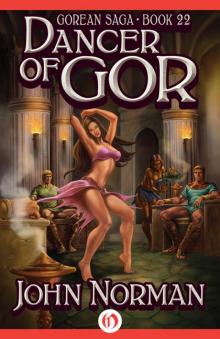 Dancer of Gor
Dancer of Gor Outlaw of Gor coc-2
Outlaw of Gor coc-2 Guardsman of Gor
Guardsman of Gor Beasts of Gor
Beasts of Gor Ghost Dance
Ghost Dance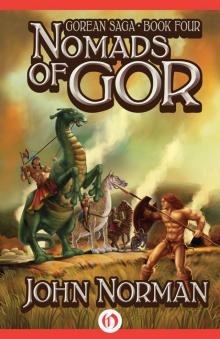 Nomads of Gor
Nomads of Gor Prize of Gor
Prize of Gor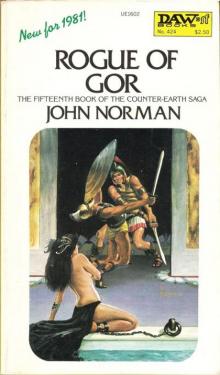 Rogue of Gor coc-15
Rogue of Gor coc-15 Swordsmen of Gor
Swordsmen of Gor